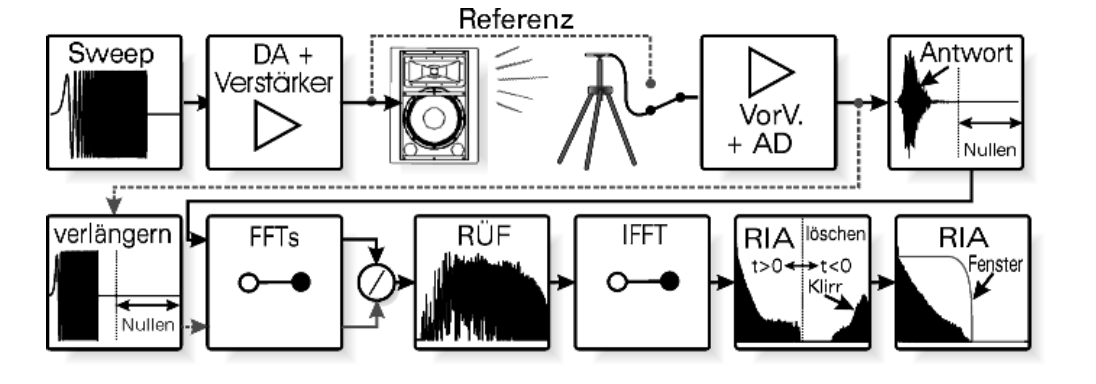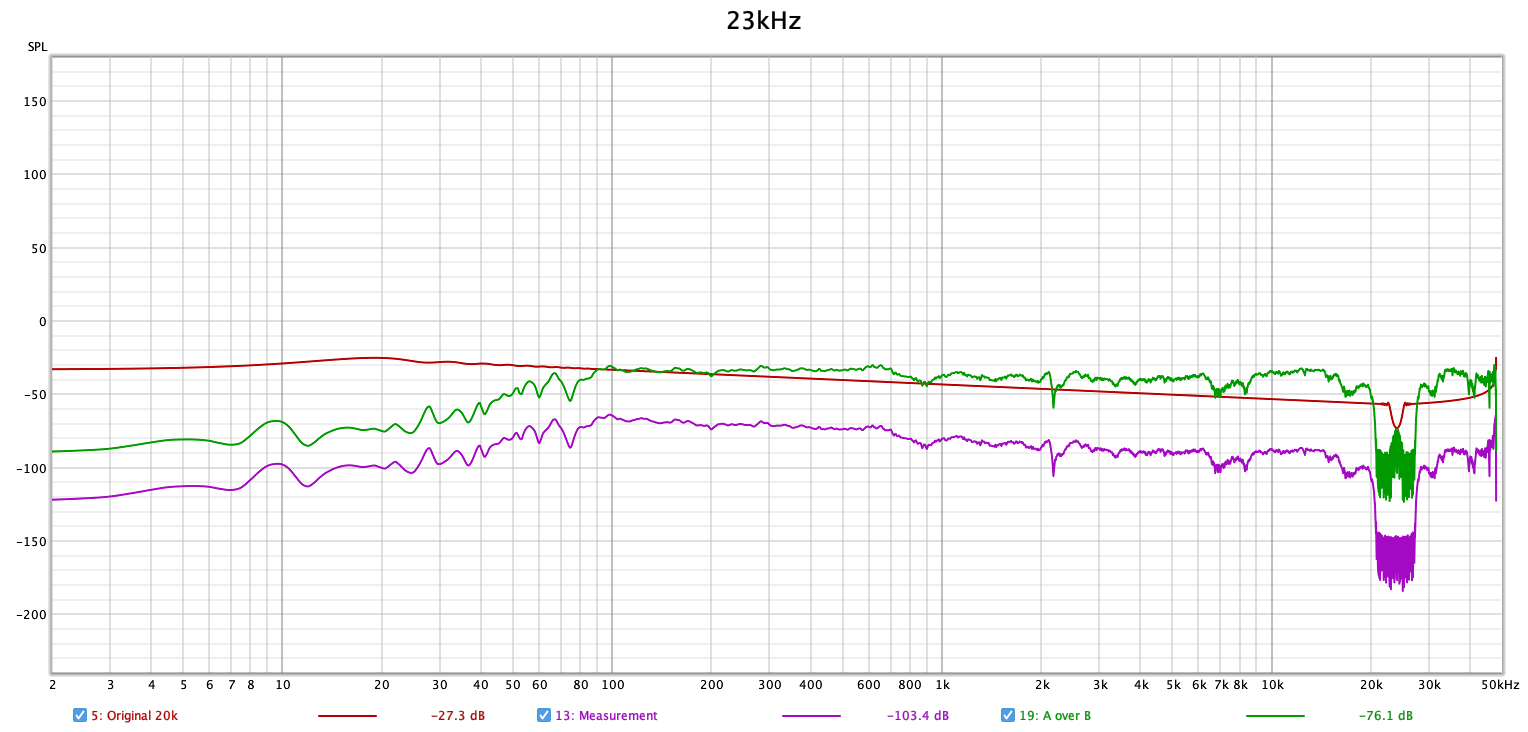I am currently working on my master thesis and have so far generated a broadband ESS to obtain frequency response and impulse response. To generate the ESS as an excitation signal I use the following formula:
𝑥(𝑡)=sin(2𝜋𝑓1𝑇𝑅(𝑒𝑡𝑅𝑇-1)).
See: Calculating the inverse filter for the (exponential) sine sweep Method
For the broadband signal, I chose f1=10Hz and f2=23kHz.
After recording the excitation signal, I get my spectrum via complex division and with subsequent IFFT my impulse response.

Here everything still works great (see picture ESS20k). But for my subwoofer I want to create an excitation signal with f2=500. But there are errors in the spectrum, as well as in the impulse response(See picture ESS500Fehler).
I know that it has something to do with the frequency spectrum above 500Hz. If I set this above 500Hz to -150dB, I at least get a recognizable impulse response. However, this leads to problems as soon as you move the measurement window (I have done this so far to measure the distance). If anyone could help me even with a new way of thinking, I would be very grateful.



